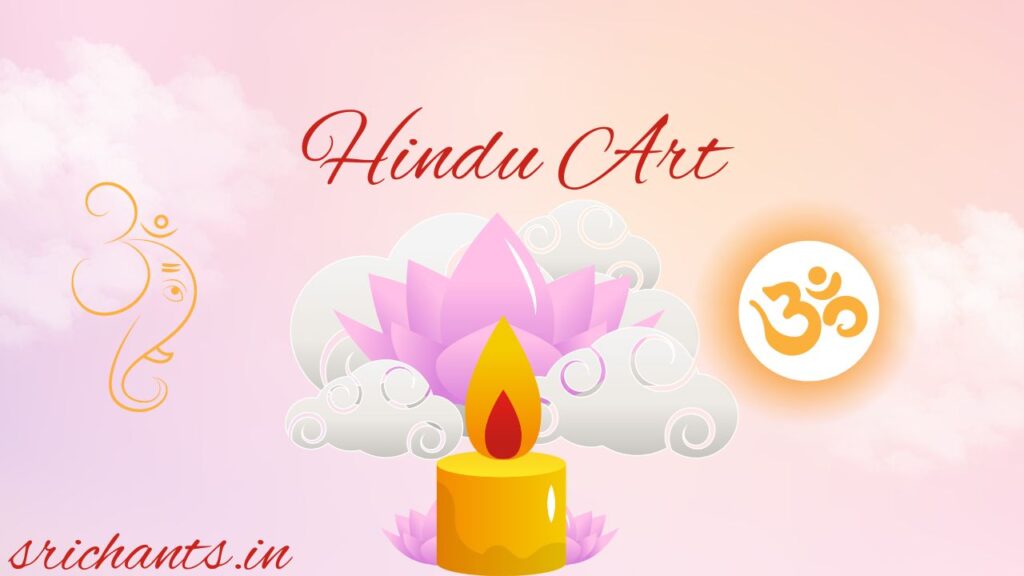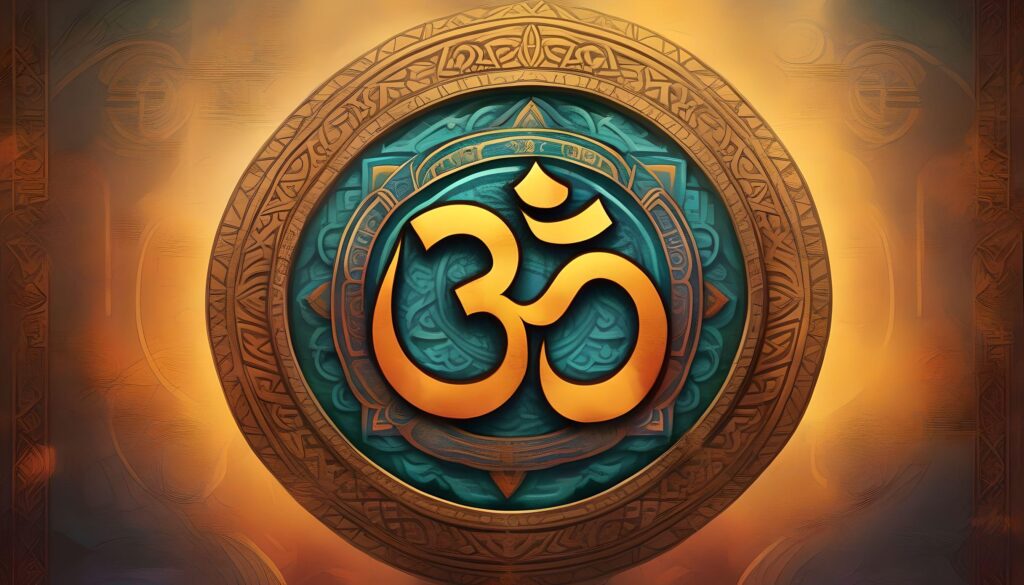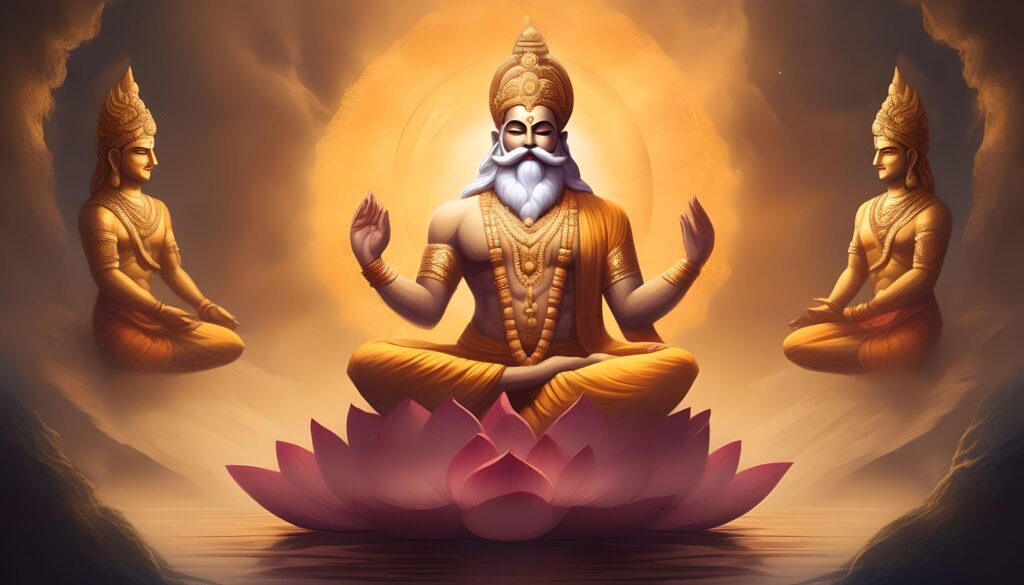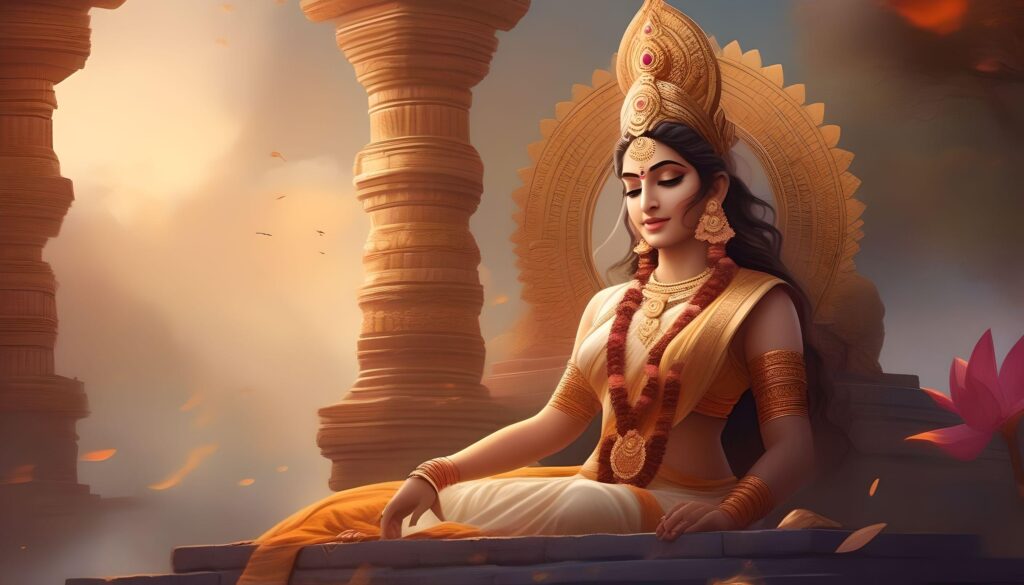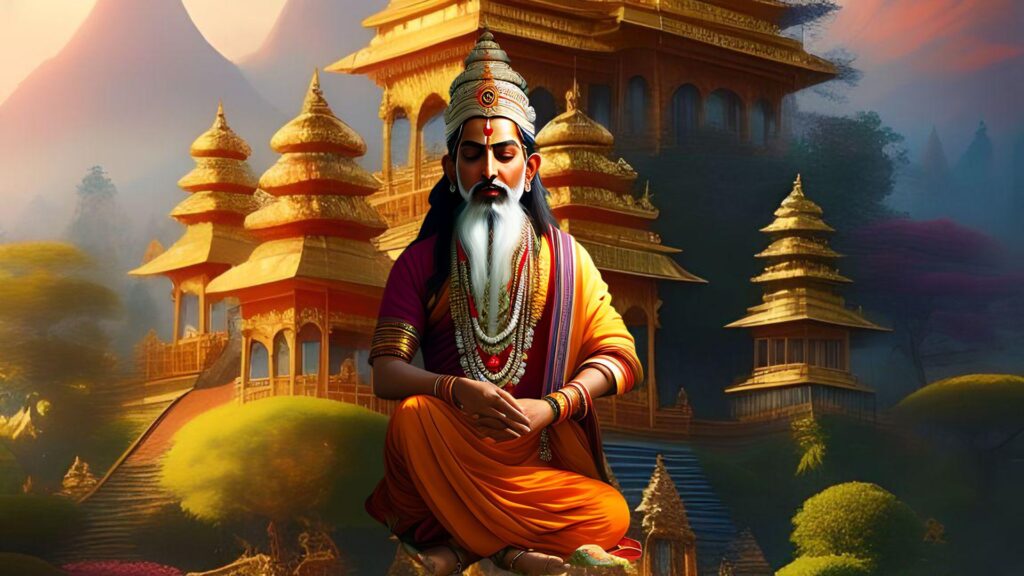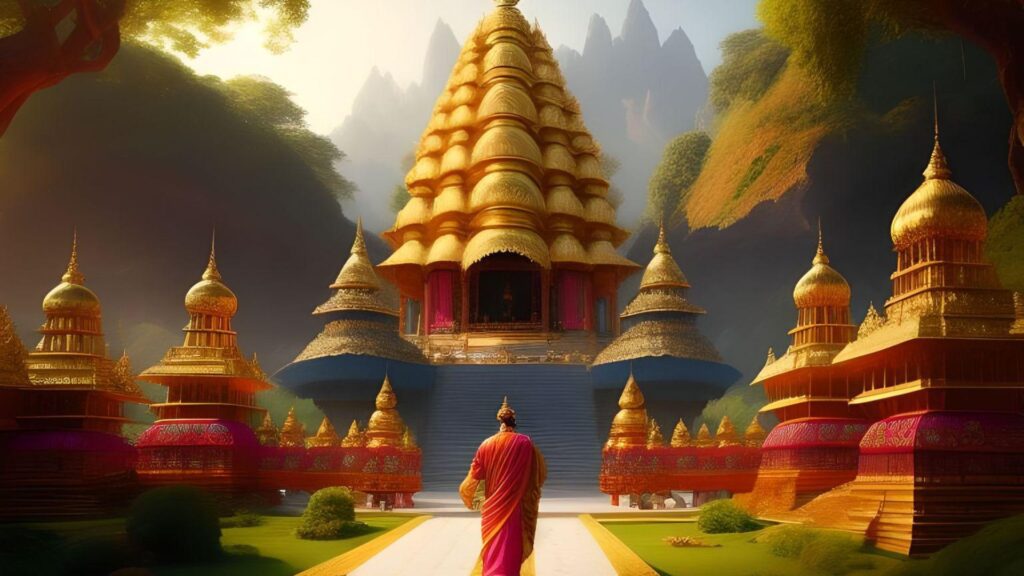Hindu Art : What Is Hindu Art? Understanding the Characteristics and Styles
Hindu art, a multifaceted and captivating mode of artistic manifestation, has developed throughout the centuries on the Indian subcontinent under the influence of Hinduism’s illustrious spiritual and cultural traditions. Hindu art comprises a diverse array of mediums and styles, featuring vibrant paintings as well as intricate sculptures, each endowed with its own distinctive attributes and symbolic significance. This article will delve into the historical background, distinctive attributes, thematic elements, artistic genres, and stylistic variations of Hindu art, thereby illuminating its profound cultural and religious connotations.
The Origins and History of Hindu Art
Hindu art originates in antiquity, as evidenced by architectural and sculpture masterpieces that date back to the Indus Valley Civilization (approximately 3300-1300 BCE). In contrast, Hindu art experienced substantial development and flourished most notably during the British colonial period and the Middle Ages.
Amid the Middle Ages (approximately 500-1500 C.E. ), Hindu art experienced its zenith, with temple architecture and sculpture emerging as particular highlights. Prominent Hindu kingdoms in South India, including the Pallava and Chola empires, erected awe-inspiring temple complexes that were magnificent works of art and manifestations of devotion.
The emergence of British colonial authority in India (1757-1947) led to a convergence of Western influences and traditional Indian aesthetics in the realm of Hindu art. Contemporary Hindu artists adopted novel artistic techniques and forms while remaining authentic to their cultural heritage.
The Characteristics of Hindu Art
Hindu art is distinguished by a number of distinctive qualities that mirror the profound spiritual convictions and cultural customs of Hinduism. The following attributes contribute to the uniqueness and aesthetic appeal of Hindu art:
- Symbolism and Motifs: Hindu art is replete with symbolic elements, including motifs, hues, and forms that symbolize deities, philosophical notions, and sacred narratives. Every constituent possesses deep significance and meaning.
- Depictions of Hindu Mythology: Hindu artistic expression is often influenced by the illustrious fabric of Hindu mythology and religious storylines. In Hindu art, narratives of holy men and deities, along with scenes from epics such as the Ramayana and the Mahabharata, are frequently portrayed.
- Ornate and Complex Designs: Hindu art is characterized by elaborate and complex patterns, which serve as a manifestation of the Hindu doctrine of universal unity. The artwork is an exquisitely crafted composition that harmoniously integrates formal and thematic elements, resulting in a visually captivating whole.
- Sacred Symbols in Nature: As religious symbols, vegetation, trees, and animals are incorporated into Hindu art. In Hinduism, these natural elements are held in high regard due to their divine association and are employed to communicate profound spiritual ideas.
- Spiritual Inspiration: The purpose of Hindu art is to communicate a message of faith and reverence. Every piece of artwork possesses a deep spiritual significance, encouraging observers to reflect upon the transcendent and initiate an individual spiritual quest.
The Themes of Hindu Art
Hindu art is influenced by the profound fabric of Hinduism, which comprises a plethora of tenets, legends, and stories. The following are examples of recurring motifs and themes in Hindu art:
- Deities and Goddesses: Delightful Hindu deities and goddesses, including Vishnu, Shiva, Kali, and Lakshmi, are frequently portrayed in art. The power and grace of these divine entities are encapsulated in the diverse forms and manifestations in which they are depicted.
- Mythological Narratives: In Hindu art, narratives from epics such as the Ramayana and the Mahabharata are frequently portrayed. Ddevotees derive inspiration and moral guidance from these narratives.
- Nature and Sacred Symbols: Hindu art employs animals, plants, and blossoms as representations of the sacredness of the natural world. The interdependence and divine connection of all living things are symbolized by these motifs.
- Journey of the Soul: The Hindu belief in the cyclical nature of existence and the soul’s passage through an infinite number of incarnations is reflected in Hindu art. Themes of birth, mortality, rebirth, and the pursuit of spiritual enlightenment are frequently depicted in works of art.
Types of Hindu Art
Diverse manifestations of Hindu artistic expression highlight distinct aspects of Hindu belief and practice. Prominent illustrations of Hindu art comprise:
Sculpture
Hindu sculpture incorporates an extensive variety of artistic styles and techniques, which extend from ornate figurines to grand temple idols. A wide variety of materials, including bronze, stone, and wood, are utilized by sculptors to manifest the celestial forms.
Painting
Miniature paintings and large-scale murals have for an extended period of time encapsulated the fundamental aspects of Hindu mythology and religious motifs. These works of art utilize vivid hues and elaborate intricacies in order to communicate narratives and elicit sentiments.
Architecture
Hindu architecture is widely recognized for its magnificence and elaborate ornamentation. Monuments such as temples, palaces, and fortifications serve as tangible evidence of the remarkable architectural prowess exhibited by ancient and medieval Hindu civilizations. These architectural marvels are embellished with intricate carvings, domes, and structures, which effectively transport visitors to a realm imbued with divine beauty.
Textiles
Fabrics originating from the Hindu tradition are renowned for their vivid hues, ornate designs, and integration of sacred imagery. Textiles are of paramount importance in both religious rituals and daily existence, serving as a reflection of the artistic legacy and cultural abundance of Hinduism.
Jewelry
Hindu jewelry serves as a religious work of art in addition to being a mundane ornament. Hindu jewelry is distinguished by its intricate craftsmanship, precious gemstones, and ornate designs; it is a symbol of devotion and spirituality.
Folk Art
Hindu folk art comprises an extensive assortment of customary artistic endeavors, such as weaving, mask-making, puppetry, and pottery. These artistic expressions have been transmitted across generations, safeguarding antiquated customs and cultural methodologies.
The extensive and varied cultural heritage of the Hindu people is mirrored in the diverse genres of Hindu art, which each provide a distinct insight into their spiritual convictions and artistic manifestations.
Hindu Art Styles
The multifarious artistic techniques that comprise Hindu art are a reflection of the religion’s and culture’s diversity. Although a multitude of designs are present, notable ones comprise:
South Indian Bronzes
Bronzes from southern India are emblematic of a distinct Hindu sculpture style that originated in that region. The dynamic poses, intricate facial expressions, and flowing lines that define these sculptures. Bronze sculptures of Hindu deities, goddesses, and mythological creatures are frequently featured as subjects.
Rajasthani Paintings
The western region of India is the birthplace of Rajasthani paintings, which are renowned for their vibrant hues, elaborate patterns, and symbolic significance. The artworks portray both mundane existence and legendary anecdotes derived from Hindu mythology.
Pattachitra
Pattachitra is an artistic technique that originated in the state of Odisha in eastern India. The artistic expressions in this particular style are distinguished by their intricate compositions, vivid color schemes, and portrayals of Hindu narratives and folklore.
The aforementioned artistic styles merely constitute a minute portion of the vast array of Hindu artistic traditions. The cultural and regional significance of each design contributes to the diverse and intricate fabric of Hindu art.
Hindu Art Temples
Hindu temples are not only places of worship but also architectural marvels and artistic wonders. These temples serve as a testament to the devotion and creative genius of the Hindu people. Several characteristics define Hindu temples:
- Hindu temples often feature grand structures with towering minarets, intricate sculptures, and ornate domes. These architectural elements serve as a visual representation of the divine and create a sense of awe and reverence.
- Hindu temples can be found across the globe, each reflecting its unique regional style while preserving the intricate detailing and rich decoration that is characteristic of Hindu temple architecture.
- Sculptures and reliefs depicting Hindu deities, goddesses, and religious symbols adorn the walls and interiors of Hindu temples. These sacred artworks serve as points of reverence and enable devotees to connect with the divine through visual representation.
- The sanctum sanctorum, or the holiest of holies, is the most sacred area within a Hindu temple. It houses the primary statue or idol of the deity, and devotees direct their prayers and adoration towards this sacred space.
- Hindu temples are centers of religious and cultural activities, with priests and devotees performing daily rituals and ceremonies. Music, dance, and the presentation of symbolic offerings further enhance the spiritual ambiance of these sacred spaces.
- Hindu temples often serve as community hubs, hosting cultural events, fairs, and festivals. They provide a space for devotees to come together, celebrate, and foster a sense of community.
Hindu temples are not only architectural marvels but also works of devotional art that embody the essence of Hindu spirituality and cultural heritage.
The Philosophy of Hindu Art
The philosophy of Hinduism deeply influences Hindu art, shaping its purpose, aesthetics, and spiritual significance. Some key philosophical principles that underpin Hindu art include:
- Symbolism and Spiritual Meaning: Symbolism is utilized in Hindu art to communicate profound spiritual and religious connotations. By employing hues, forms, and motifs, an assortment of deities, philosophical notions, and universal truths are symbolized.
- Emphasis on Aesthetics: Hinduism upholds aesthetic appeal and the pursuit of harmonious equilibrium in every facet of existence. Hindu art endeavors to attain aesthetic excellence by crafting works that are both visually captivating and evocative.
- Art as a Spiritual Tool: Hindu artists hold the conviction that their works have the capacity to elicit profound emotional responses from observers. Art is widely regarded as a conduit by which people can attain spiritual enlightenment, develop self-awareness, and establish a connection with the divine.
The importance of Hindu art lies in its ability to facilitate a deeper understanding of the divine, preserve ancient traditions, and foster personal growth and enlightenment.
Conclusion
Hindu art is a dynamic and heterogeneous artistic tradition that has undergone a gradual transformation throughout the centuries, mirroring the philosophical tenets, cultural legacy, and spiritual convictions of Hinduism. Hindu art encompasses an extensive array of mediums and styles, including textiles, architecture, sculptures, and paintings, each with its own distinctive qualities and symbolism. Hindu art, by virtue of its extensive historical background, thematic composition, and stylistic diversity, stands as a testament to the profound artistic and spiritual heritage of the Hindu civilization. Continently captivating and inspiring spectators, its aesthetic allure and profound spiritual significance extend an invitation to embark on a voyage of introspection and establish a connection with the divine.
